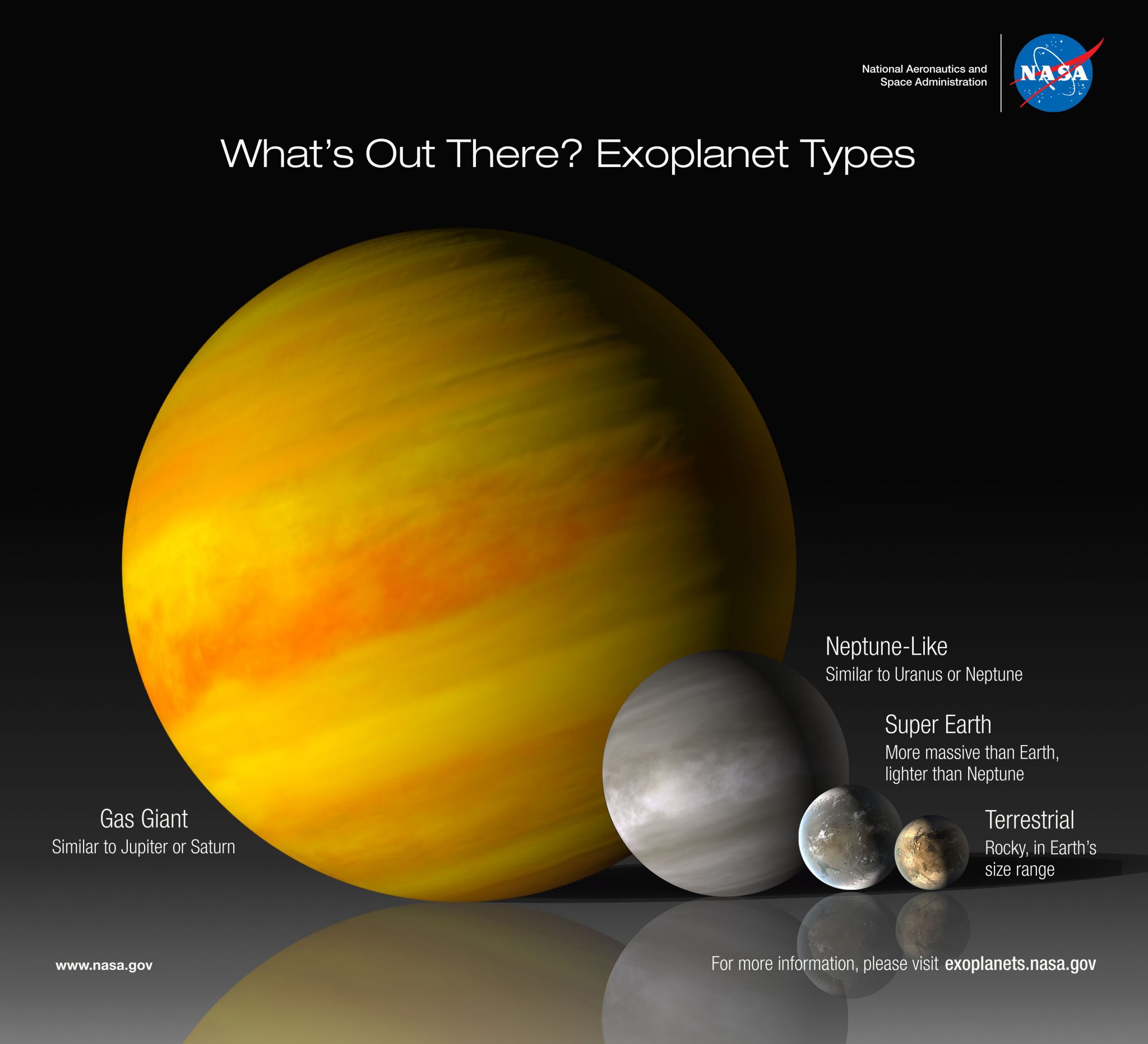All of the planets in our solar system orbit around the Sun. Planets that orbit around other stars are called exoplanets. Exoplanets are very hard to see directly with telescopes. They are hidden by the bright glare of the stars they orbit.
|
|
EXOPLANET TYPES Exoplanets come in a wide variety of sizes, from gas giants larger than Jupiter to small, rocky planets about as big around as Earth or Mars. They can be hot enough to boil metal or locked in deep freeze. They can orbit their stars so tightly that a “year” lasts only a few days; they can orbit two suns at once. Some exoplanets are sunless rogues, wandering through the galaxy in permanent darkness. This photo shows the difference volume depending on what the exoplanet is formed with. |
|
Kepler detected exoplanets using something called the transit method. When a planet passes in front of its star, it’s called a transit. As the planet transits in front of the star, it blocks out a little bit of the star's light. That means a star will look a little less bright when the planet passes in front of it. Astronomers can observe how the brightness of the star changes during a transit. This can help them figure out the size of the planet. By studying the time between transits, astronomers can also find out how far away the planet is from its star. |
|
|

